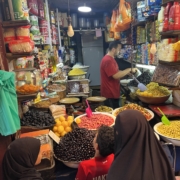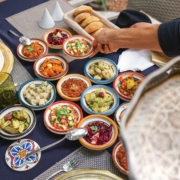Cooking for a Crowd? Here’s What you Need to Know
0 Comments/in Blog/by Dominique RizzoAre you cooking for a crowd? If so then there are a few things that you can do to make your life way easier. This guide will tell you what steps you can take to try and cut down on the amount of work you have to do, so you can ensure a successful evening overall.

Keep it Simple
The fastest and the easiest meals are sometimes the ones that are the tastiest. Find a recipe that has a short prep time and that has low maintenance too. Cooking can help to make feeding a large group of people feel like a breeze. If you need a simple recipe to feed a crowd then a curry could be the way to go. You can simmer it ahead of time, and measure out all of the spices ready and when you do, you have everything you need to ensure the perfect dish.
Recruit a Friend
Another thing you can do is try and recruit a friend to help you cook. The great thing about having a friend help you cook is that you can lessen the amount of work you have to do, and you also have an extra set of hands. This means you can split up cooking a big meal, which will help you more than you realize. If you want, you can also host a potluck. A potluck dinner means that everyone is bringing one item of their own, which can be shared amongst a group. If you are making a soup, you could ask someone to bring a crust white Vienna, and if you are hosting a roast dinner you could ask someone to bring the roast potatoes. Either way, things like this can lessen the strain you are under.
Use your Slow Cooker
Another thing you can try and do is use your slow cooker. The best thing about using a slow cooker is that it helps you to reduce the amount of preparation you have to do. It also means you can keep it warm for when you have people coming over. If you can keep things like this in mind then you will soon find that it is easier for you to get the cooking done, and you can also time everything perfectly. If your biggest fear is burning something or having food go cold then this will make your life a lot easier. Nobody has an issue with slow cookers either, so it’s not like you won’t be putting on a full dinner. The only thing you have to keep in mind is that when you use a slow cooker, you need to make sure that you do not cook the item for too long. If you do then you may find that the meat you are cooking ends up breaking down too much and that you end up with mushy vegetables, all of which can be avoided if you simply take the time to prepare in time, and not forget about your meal while you focus on the other aspects of hosting.
How to Share the Love with Freshly Baked Treats
0 Comments/in Blog/by Dominique RizzoFreshly baked treats are powerful emotional gifts that evoke comfort, nostalgia, and joy, making them perfect for sharing love and care.
Creative ways to share treats include personalized packaging, thoughtful themes, and surprise deliveries for special occasions.
Baked goods are versatile gifts for celebrations, comfort during tough times, and unique holiday traditions, tailored to suit any recipient.
Sharing baked treats fosters meaningful connections, creates cherished traditions, and leaves lasting impressions through thoughtful, heartfelt gestures.

There’s something truly magical about sharing freshly baked treats. From the warm, comforting aroma to the melt-in-your-mouth sweetness, baked goods have an extraordinary ability to bring people closer together. Whether you’re celebrating a milestone, expressing gratitude, or just brightening someone’s day, baked treats serve as edible tokens of love and care.
In this blog, you’ll discover why baked goods hold such emotional power, creative ways to share them, and tips for making these moments even more special. By the end, you’ll feel inspired to spread a little sweetness in your corner of the world and create unforgettable memories along the way.
The Emotional Power of Freshly Baked Treats
Freshly baked treats have an unparalleled ability to evoke comfort, joy, and nostalgia. Imagine the wafting scent of cookies straight from the oven—it’s a universal reminder of home, warmth, and love. This emotional connection makes them a perfect gift for showing you care.
There’s also something deeply personal about giving baked goods. Unlike generic gifts, treats are made or chosen with thoughtfulness. Whether it’s a family recipe passed down through generations or handpicked goodies from a local bakery, they tell a story of effort and intention.
Stories of shared baked treats often weave into traditions, such as delivering a basket of muffins to new neighbors or gifting homemade pies during the holidays. These acts go beyond simple gestures—they create lasting memories and deepen relationships.
Creative Ways to Share Freshly Baked Treats
Sharing baked goods can be as innovative as it is thoughtful. A beautifully packaged selection of cookies or cupcakes delivered with a handwritten note transforms an ordinary day into an extraordinary one. For those who live far from loved ones, services like cookies delivery Sydney make it easy to send a sweet surprise that feels just as personal.
It’s not just about the treat itself but also the presentation. Think about adding little touches like themed wrapping, reusable containers, or even a personalized message tied with a ribbon. These details show the recipient that you’ve gone the extra mile to make them feel special.
Another creative idea is curating “themed” baked goods for specific occasions. For example, a cookie bouquet for a birthday, seasonal muffins for autumn, or a variety box to celebrate a milestone. The possibilities are endless, and the effort will always be appreciated.
Ideal Occasions for Sharing Baked Goodies
Baked treats are versatile gifts that suit almost any occasion. Whether it’s a grand celebration or a quiet moment, they have a way of making the experience sweeter. Birthdays, for example, become extra memorable with a box of freshly baked cupcakes or cookies tailored to the guest of honor’s favorite flavors.
Anniversaries and romantic milestones are also perfect for sharing treats. Imagine surprising your partner with a heart-shaped box of their favorite pastries or an elegant dessert platter. These thoughtful gestures can turn an ordinary day into a cherished memory.
Even during challenging times, baked goods provide comfort and support. Sending a care package of warm cookies or a loaf of banana bread can uplift someone facing a tough moment. They’re also wonderful for seasonal holidays, where you can embrace the spirit of giving with festive cookies or gingerbread creations.
Tips for Choosing or Making the Perfect Treats
When it comes to selecting or baking treats, a little thought goes a long way. Start by considering the recipient’s preferences. Do they love classic chocolate chip cookies, or are they fans of exotic flavors like matcha or lavender? Tailoring your choice ensures your gift feels personal and heartfelt.
For those who love baking, simple recipes with a twist can make a big impression. Try adding unexpected ingredients like sea salt, caramel, or fresh herbs to elevate traditional favorites. Alternatively, if baking isn’t your strength, you can still wow with artisan-crafted goodies from local bakeries.
Packaging plays a crucial role in creating a memorable experience. Opt for decorative boxes, reusable tins, or eco-friendly wrapping that keeps the treats fresh while looking beautiful. Don’t forget to include a handwritten note or card—it’s a small touch that leaves a lasting impact.
Building Long-Lasting Connections Through Shared Treats
Sharing freshly baked treats isn’t just about the food; it’s about creating meaningful connections that last. Whether it’s delivering cookies to a neighbor, surprising a colleague, or sending a care package to a distant relative, these simple acts of kindness forge bonds that grow stronger over time.
Baked goods often serve as catalysts for shared moments. A shared plate of cookies at a meeting can spark conversations, while a surprise delivery can reignite friendships that have grown distant. These small gestures are powerful reminders of how thoughtful acts can bring people together.
You can also build traditions around sharing baked treats, like hosting an annual cookie swap or baking together with loved ones. These rituals become cherished memories, strengthening the ties you share with those around you. The love you pour into each treat is felt long after the last bite.
Conclusion
Freshly baked treats have a unique way of spreading love, joy, and connection. From celebrating milestones to offering comfort in tough times, they’re more than just food—they’re heartfelt gestures that create lasting impressions.
As you explore ways to share these sweet surprises, remember it’s the thought behind the treat that truly matters. Whether you bake them yourself or select them from a trusted bakery, your effort will always leave a mark on the hearts of those you care about.
5 Places To Visit That Inspired Movies/Shows
0 Comments/in Blog/by Dominique RizzoIf your hobby is travelling, and you do a frequent amount of it, sometimes picking another destination can be hard. There’s just so much to see, and unless you already have the inspiration for somewhere, deciding your next destination is very difficult to do. However, after recently being sat down watching netflix with friends, an idea occurred: What about visiting places strongly affiliated with TV shows/Movies? You can likely experience exactly where certain parts were cast, and this method is a very popular way for fans to come and try and recreate their favourite scenes from their favourite shows! Although it’s possible for a solo traveller to do this, it’s likely much more fun to go as part of a group, maybe people with the same interest in TV shows? Here are some great examples for inspiration!
Dubrovnik – Croatia – Game of Thrones
Following the success of Game of Thrones, Croatia became an incredibly popular location for tourists, in particular Dubrovik. People flocked in far and wide to see the streets of Kingslanding and the ‘shame steps’, as they’ve been affectionately named. In Dubrovnik alone, you can walk along the castle walls of Kings Landing, you can visit the Red Keep, walk to the edge of the bay that Sansa spends a lot of time staring from (Which by the way, is actually one of the most popular scenes for a lot of fans to recreate, alongside the steps), you can visit the house of the undying (But you won’t disappear as Khaleesi did), and so many more. Dubrovnik is also situated very well next to local islands you can visit that are the locations for many more GoT scenes, but you should absolutely experience this for yourself!
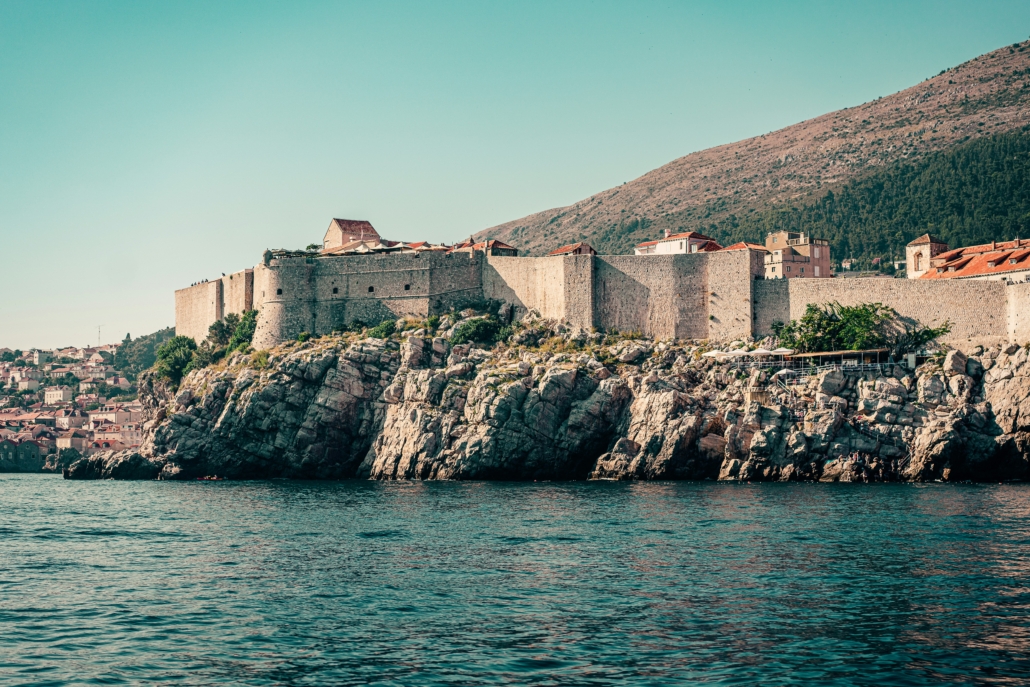
https://unsplash.com/photos/brown-concrete-building-on-rock-formation-near-body-of-water-during-daytime-r02BhUQj6cE
Matamata – New Zealand – Lord of The Rings
Home to what Lord of the Rings fans will all know as ‘Hobbiton, or the Shire’, Matamata is a beautiful location to visit, and a must see if you’ve ever seen Peter Jackson’s LoTR series. Matamata is very true to the set itself and looks exactly as it looks in the movies. With over 40 ‘hobbit holes’ to see, and guided tours that include visiting the clearing in which Bilbo has his party before mysteriously disappearing, and can kick back your feet at the ‘Green Dragon’, a tavern fondly known for Merry and Pippin’s antics.
Hatfield Park – Hertfordshire – Various Movies
Hatfield Park is one of the most iconic spots to film in the UK, largely owing to Hatfield House, which as well as being used in the recent show Bridgerton as the house of the Featheringtons, has also played host to many other films and shows, such as Sherlock Holmes, Harry Potter, etc. Hatfield house is a very popular building to be used generally as a house for royal or wealthy families, another example being the Croft Manor in the Tomb Raider films played by Angelina Jolie.
Salzberg – Austria – The Sound of Music
For a fan of musicals, Salzberg is not only a lovely city to visit in general, but is famous for many of the locations seen in The Sound of Music, many of which are available to visit, including the iconic Schloss Leopoldskron, (which is the exterior of the Von Trapp Household, and also a hotel in which you can stay in now), Schloss Hellbrunn, (where you’ll find the Gazebo in which Maria and the Captain sang their famous duet “Something Good”), St. Peter’s Monastery, where the family took refuge in their efforts to escape the Nazis, and many more locations.
London – Harry Potter
As well as being just a lovely city to travel to, being the capital, London is home to one of the most famous train stations in the world, thanks to the magical world of Harry Potter. Harry Potter fans will know all too well the method in which to get to platform 9 and ¾ , and Kings Cross eventually marked a wall in between 9 and 10 as homage, much to fans’ enjoyment. It is still used daily for thousands of photoshoots, and while you’re at the station, why not board a train to Oxford, home of so many filming locations around hogwarts? Unfortunately you can’t board a train directly to Oxford, which would have felt exactly as if you’re going to Hogwarts, but it’s not far off, and the trade off is worth it to see the inspiration behind places like the Hogwarts Great Hall, and so many other parts of the Oxford University that ended up making Hogwarts.
Why Low Blue Light Feature on Phones is Essential for Eye Protection
0 Comments/in Blog/by Dominique RizzoThe low blue light feature on phones plays a crucial role in protecting eye health and minimizing the potential negative effects of blue light exposure on visual comfort, eye strain, and long-term eye health. By reducing the amount of blue light emitted by smartphone displays, this feature aims to alleviate digital eye strain, minimize the risk of eye fatigue, and support overall eye protection for users. Understanding the importance of the low blue light feature in safeguarding eye health can help individuals make informed decisions about their screen time habits and prioritize visual comfort when using electronic devices. Below are detailed explanations of why the low blue light feature on phones is essential for eye protection.


Roles of Low Blue Light Feature on Phones
1. Blue Light and Eye Health
Blue light is a high-energy visible light emitted by digital screens, LED lighting, and sunlight. Prolonged exposure to blue light, particularly from screens, can lead to eye strain, discomfort, and potential long-term risks to eye health. Blue light exposure has been associated with digital eye strain, dry eyes, blurred vision, and disruptions to sleep patterns. Minimizing blue light exposure is essential for protecting the eyes and maintaining visual comfort during screen use. And the HONOR 200 price dubai with this function is very worthy for you to know more about it.
2. Alleviating Discomfort and Visual Disturbances
Low blue light settings reduce glare, brightness, and harshness from blue light emissions, making the visual experience more comfortable and less straining on the eyes. By filtering out blue light, this feature can enhance visual clarity, reduce visual disturbances, and improve contrast and color accuracy on smartphone displays.
3. Support for Circadian Rhythms and Sleep Patterns
Blue light exposure in the evening can disrupt circadian rhythms and melatonin production, affecting sleep quality. The low blue light feature helps maintain the body’s natural sleep-wake cycle by reducing blue light exposure before bedtime. By minimizing blue light exposure, users may experience improved sleep onset, better sleep quality, and enhanced overall sleep patterns, leading to a more restful and rejuvenating night’s sleep.
4. Prevention of Long-Term Eye Health Risks
Excessive blue light exposure has been linked to an increased risk of macular degeneration, a leading cause of vision loss. The low blue light feature helps reduce this risk by limiting blue light exposure and protecting retinal health. Chronic exposure to blue light from screens can contribute to digital eye fatigue, a condition characterized by eye discomfort and visual disturbances. The low blue light feature helps alleviate these symptoms and protect against long-term eye strain.
5. Promotion of Healthy Screen Time Habits
The low blue light feature encourages users to practice balanced screen time habits by reducing the impact of blue light exposure on eye health without completely avoiding device use. By incorporating low blue light settings into daily smartphone usage, individuals can create a more eye-friendly screen time environment that prioritizes visual comfort, eye protection, and overall well-being.
6. Adaptation to Diverse Lighting Conditions
Many smartphones with a low blue light feature offer adjustable settings for blue light reduction, allowing users to customize the intensity based on ambient lighting conditions and personal preferences. Activating the low blue light feature or night mode in the evening signals to the body that it is time to wind down and prepare for sleep, supporting healthy circadian rhythms and promoting relaxation.
Conclusion
By utilizing the low blue light feature on phones and incorporating healthy screen time habits, individuals can safeguard their eye health, minimize eye strain, and protect against the potential risks associated with blue light exposure. This feature plays a vital role in promoting visual comfort, maintaining circadian rhythms, and supporting overall eye protection during smartphone use. Embracing the low blue light technology as an essential feature for eye health empowers individuals to prioritize visual well-being, optimize screen time habits, and cultivate a healthier relationship with electronic devices in the digital age.
Chickens and Plants in Harmony: A Guide to Garden Coexistence
0 Comments/in Blog/by Dominique RizzoChickens and plants can live together happily in your garden. When done right, chickens and plants can help each other. By adding chickens to your garden correctly, it can make the soil healthier. Chickens can also reduce bugs and diseases that hurt plants. You may get a bigger harvest of vegetables too.
In this blog post, we will talk about the good things chickens do in the garden. We will also provide a guide for chickens and plants living peacefully together.
Chickens can cause problems for plants if not taken care of properly. But the environmentally friendly gardening with chickens method discussed here balances chickens and plants. By carefully planning your chicken area layout and choosing the right chicken breeds, you can enjoy gardening with chickens. You can also protect your vegetables and flowers. With some easy steps and plant choices good for chickens, you can create a lasting gardening together system.
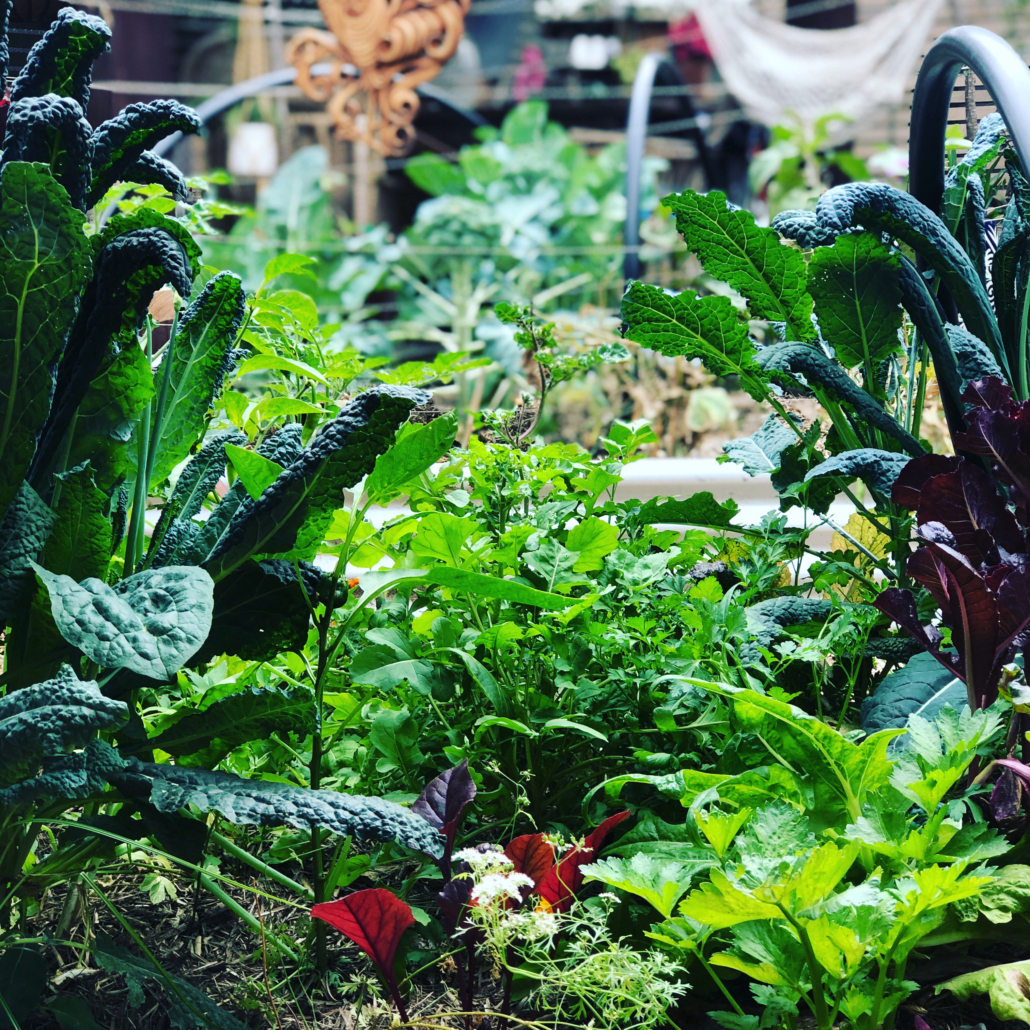

Planning Your Garden Layout for Chickens and Plants
When setting up your garden space, think about separating where chickens go from where plants grow. It’s best to have one area for chickens to freely run that’s away from main veggie beds. This keeps plants safe while letting chickens roam freely.
In the chicken area, plant things they like to eat like clover grass. Put up a fence here chickens can’t escape from, but you can easily get through. Movable fences work well.
For vegetable beds, use fences buried underground or raised beds. This stops chickens from scratching or digging. Leave empty space around beds planted with shrubs and flowers chickens ignore.
You can also use moving chicken houses called “chicken tractors.” Place them in parts of the yard each day. This expands chicken space while crops get time to regrow before chickens return.
With a thought-out plan, you can take care of chickens and plants together in your garden peacefully.
Choosing Chicken Breeds That Won’t Damage Your Plants
Not all chickens are suitable for freely roaming gardens. Gentler breeds that don’t scratch and peck as much are best. Good options are French Copper Marans, Sicilian Buttercups, and Welsummers. They tend to be calmer chickens.
Avoid aggressive breeds like Americans that often dig and scratch a lot. Store-bought hybrids may also be hard to keep away from plants.
For your garden, choose calm breeds that like eating plants, not digging them up. Watch the young chicks to pick ones less likely to cause trouble later. Choosing the right types helps protect your plants from damage.
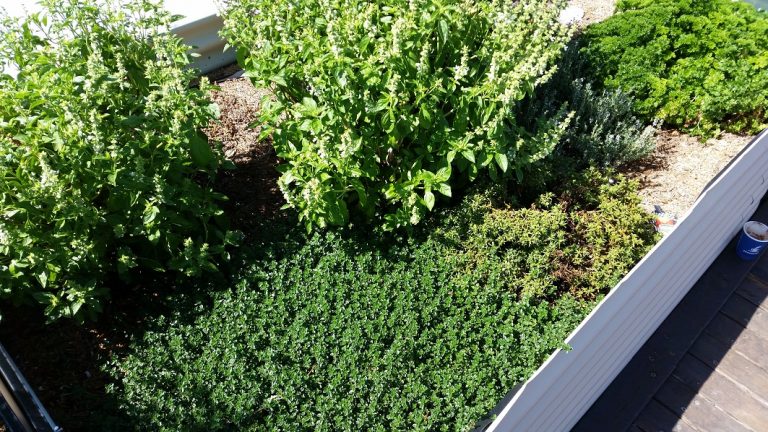
Creating Chicken-Friendly Zones in Your Garden
Designate part of your garden as a chicken grazing area filled with deliberate plantings appealing to chickens’ taste. Include chicken-friendly plants like:
- Clovers (provides protein and minerals)
- Grasses
- Dandelions
- Blackberries and raspberries (high in vitamins)
- Vegetative prunings from the garden
Pile fallen leaves, chopped brush, or unwanted weeds in these zones for natural scratching and foraging material. Chickens will be more contained when they have ready access to a diverse, interesting environment in your garden.
How to Protect Your Plants from Chicken Damage
A few simple precautions go a long way in shielding valuable plants from chicken interference:
- Fence off seedlings, small vegetable beds, and herbs with netting buried deep. This prevents scratching.
- Cover young plants with old pantyhose or stockings to stop pecking.
- Wrap spirals of fencing around tree bark to stop scratching.
- Put objects like hot sauce or float vales that chickens learn to avoid around fragile plants.
- Use natural scents like fox urine to keep chickens away from areas.
- Cover garden beds with mulch-like wood chips or straw. Chickens don’t like scratching this.
- With barriers and distractions, you can allow chickens free range without damage. Guiding their behavior is key to a peaceful garden.
Using Chicken Manure as Fertilizer for Your Garden
Don’t think of chicken poop as a chore – it’s great natural fertilizer! Fresh poop is too strong and can burn plants.
It’s best to collect poop from coops regularly. Then compost it for 3-6 months to mellow it out before using.
Spread the aged poop around plants and mix it into the top few inches of soil. This boosts nutrients like nitrogen, phosphorus, and potassium.
One chicken makes enough fertilizer each year for 25 square feet of garden space. With careful handling, poop is a wonderful natural way to help soil.
Companion Planting with Chickens: Maximizing Plant Health and Yield
The practice of companion planting with chickens leverages poultry’s natural behavior to support plant growth. Chickens scratching and pecking in garden beds can be redirected from damaging crops to boosting them through strategic plant combinations.
Some beneficial pairings include:
- Interspersing chicken-friendly plants like Dutch white clover among vegetables. Chickens will forage the clover, aerating the soil and leaving behind natural fertilizer to benefit veggies.
- They are planting aromatic herbs disliked by pests near susceptible crops. As chickens disturb the soil, released herb scents will naturally repel detrimental bugs.
- Growing legumes fixing nitrogen in the soil. This nourishes plants while fulfilling chickens’ pecking instinct, improving soil fertility.
Through deliberate companion planting, you can allow chickens to help manage pests, cycle nutrients and cultivate healthy soil – maximizing garden yield with poultry presence. It’s a win-win form of integrated pest management.

Incorporating Chicken Tractors into Your Garden Design
Chicken tractors can help gardens with less space or wanting to move chickens around. These portable coops on wheels let you fence chickens in different yard areas safely.
To use tractors, divide your garden with fences into sections. Move the coops each day to fresh spots. This mimics how chickens naturally browse while giving grazed plants time to regrow for the next day.
Look for sturdy tractors made for your flock size that are easy to push around. Add nests, perches automatic feeders, and water inside. The top should stop chickens from flying away but let you reach eggs.
With tractors, you fully control chickens’ garden impact. Moving them prevents over-browsing. But chickens still enrich the soil by pecking within your place in a balanced way.
Harvesting Eggs and Vegetables from Your Chicken-Enhanced Garden
The reward of your integrated garden effort is fresh eggs and produce! With diligent plant choices, your chicken-enhanced garden allows dual feeding chickens with garden produce and harvesting from chicken efforts.
Collect eggs regularly, being careful not to disturb setting hens. Store in the coolest part of your kitchen for 2-4 weeks of freshness.
Some crops chickens aid include:
- Pest-resistant varieties grown among foraging areas benefit from pest control
- Bugs and slugs are drawn to clover patches rather than vegetables
- Deep soil processing from scratching improves the yield and nutrition of heavy feeders like potatoes
- Fertilized areas spreading manure witness bounties of tomatoes, squash, and more
With each passing season, your garden will flourish thanks to symbiotic gardening tips with poultry. Maximizing space through rotational grazing optimizes benefits for all. Enjoy the abundance!
Troubleshooting Common Issues in a Chicken and Plant Coexistence Garden
Even the best-laid plans can encounter hiccups when chickens and plants coexist. Here are some solutions:
- Escaped chickens – Inspect fencing for breaches, and reinforce with additional buried fencing or landscaping barriers if needed.
- Over-browsing – Increase forage options to redirect pecking or limit chicken access areas using movable fencing.
- Predators entering coops – Inspect coops for entry points and reinforce with smaller wire mesh if holes are discovered.
- Increased disease risk – Remove food and water at night when not in use and clean coops regularly to reduce pathogen spread risk.
- Squabbles in flock – Check chicken densities and types are appropriate together. Separate aggressive individuals if fighting occurs.
- Soil compaction – Allow areas to rest by chickens by rotating grazing zones and leaving paths between beds ungrazed.
With open-minded problem-solving and adaptability, you can achieve a balanced garden and poultry care. By making small adjustments over time, your chickens and plants can thrive together through sustainable garden coexistence.
For More Information – Phoebe <phoebe@penandinkmail.com>
Is Travelling to Morocco Safe?
0 Comments/in Blog/by Dominique RizzoYes it definately is ... A few words from my Travel Partners in Morocco
The earthquake that hit Morocco in early September 2023 primarily affected the Atlas Mountains region, which is located an hour and a half outside of Marrakech.
There have not been damages sustained in other areas outside of these regions, and all major destinations are still fully operational and open for travelers.
With the exception of a couple of properties in the Atlas Mountains, all of the other properties, and all of our providers for activities, transportation, guiding services, etc. are still open and operating as usual.
While we are extending our support and resources to all of those impacted by the earthquake, we are also well aware that tourism is an essential part of Morocco’s economy in general, and the affected regions in particular.
Given what our team on the ground has seen firsthand, and what our partners around the country have conveyed to us, our consensus is that, in short, coming to Morocco is the best way to help the country and its people.
We will also continue to share information about ongoing donation drives, fundraisers, and other ways to help support the impacted communities.

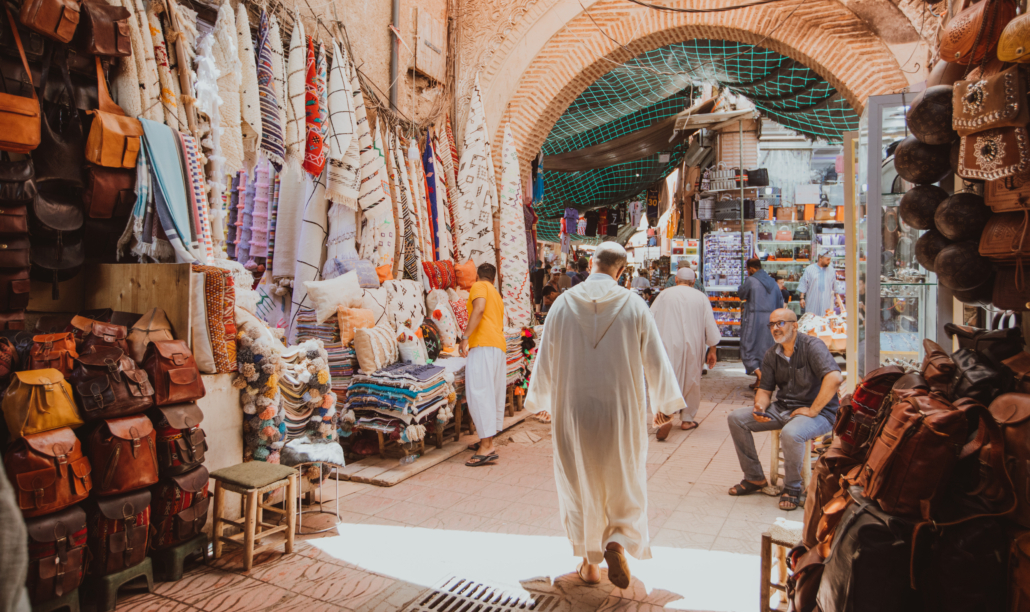
While we completely understand concerns regarding the situation in the Middle East, we do not have any concerns at this time about any political unrest that would impact the delivery of client trips in Morocco.
Our country has a long and rich history of welcoming all religions and communities of different religious denominations have coexisted peacefully for many centuries here.
Historically, Morocco has always acted as a go-between in the Israeli Palestinian conflict, and we are hoping for a quick and peaceful resolution of the most recent crisis.
Additionally, Morocco is not located in the Middle East — the country is geographically closer to Europe than anywhere else, and a flight to New York is closer than a flight to Israel.
The local authorities are monitoring the situation closely and we are in constant contact with them to ensure that all the guests traveling with us at the moment and the ones arriving in the next few days and weeks are safe.
Our travelers’ safety is our utmost priority and something we would never risk to compromise.

5 Reasons Why Travelling Alone at 50 Is No Fun
0 Comments/in Blog/by Dominique RizzoTraveling alone at 50 can sometimes lack the excitement and fulfillment that comes with shared experiences. At this stage in life, many individuals crave companionship, camaraderie, and the opportunity to create memories with loved ones.
Traveling solo may also pose challenges. Safety concerns, navigating unfamiliar environments alone, and limited social interactions.
Additionally, exploring new destinations without someone to share the journey with can feel isolating and less enriching. There is nothing better than having a drink at the end of a wonderful day and reflecting upon experiences and engaging in meaningful conversations.
Traveling alone at 50 may also lack the spontaneity and shared decision-making that comes with traveling in the company of others.
While solo travel can be empowering and introspective, it may not always fulfill the desire for shared adventures and meaningful connections that many individuals seek at this stage in life.


- Limited Shared Experiences: Traveling alone means fewer opportunities to share experiences and create memories with others. The joy of discovering a new place is often heightened when you have someone to share it with.
2. Lack of Social Interaction: Solo travel can lead to isolation, as there may be moments when you wish to discuss your experiences, seek opinions, or simply enjoy a conversation. Without companions, these social interactions can be limited.
3. Safety Concerns: Navigating unfamiliar places alone can raise safety concerns. Having a travel companion provides an extra layer of security, making it more reassuring to explore new environments, especially during nighttime or in less crowded areas.
4. Dining Solo: Dining alone can be less enjoyable for some people. Sharing meals with others is often a social and cultural experience, and solo travelers may miss out on the pleasure of trying local dishes together and exchanging culinary discoveries.
5. Solo Decision-Making: While solo travel offers the freedom to make all decisions independently, it can also be mentally exhausting to bear the entire responsibility of planning, navigating, and problem-solving without the input or assistance of a travel companion.

Is Moroccan Food Just Cous Cous and Tagine?
0 Comments/in Blog/by Dominique RizzoIs Moroccan Food Just Cous Cous and Tagine?
Moroccan cuisine is a delightful tapestry of flavours, blending influences from Arab, Berber, and Mediterranean culinary traditions. Basically its cuisine is a tantalizing blend of vibrant flavours, aromatic spices, and diverse influences that reflect the country’s rich history and cultural heritage. Consequently at the core of Moroccan cooking is a medley of spices like cumin, coriander, paprika, and cinnamon, creating a sensory journey with each dish.
Here are some of the dishes you can taste in Morocco that celebrate more than the Moroccan Tagine and cous cous.
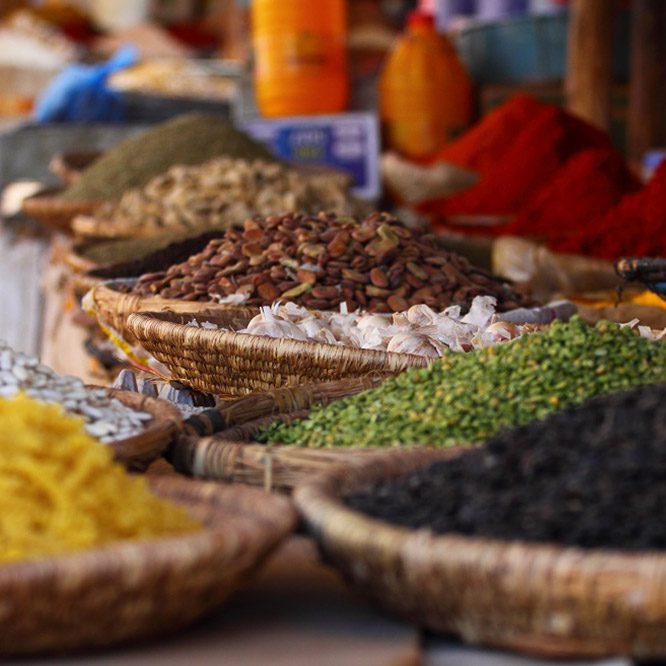
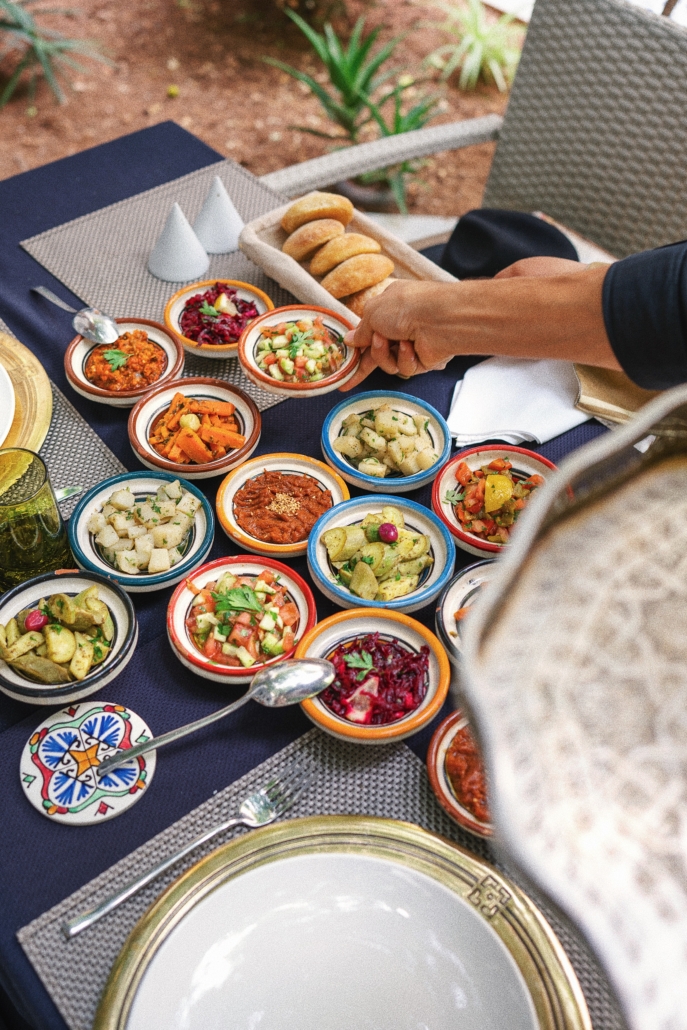
1. Pastilla: A savory and sweet pastry filled with layers of flaky dough, pigeon or chicken, almonds, and dusted with powdered sugar and cinnamon.
2. Harira: A traditional Moroccan soup, especially enjoyed during Ramadan. It typically contains tomatoes, lentils, chickpeas, and a mix of herbs and spices.
3. Bastilla: A unique pie made with thin layers of dough, stuffed with a mixture of pigeon or chicken, almonds, eggs, and spices.
4. Mechoui: Roasted lamb or sheep, often slow-cooked until tender and infused with a rich blend of spices.
5. Zaalouk: A flavorful eggplant and tomato dip, showcases the mastery of spices like cumin and coriander.
6. Mint Tea: A popular and refreshing beverage, Moroccan mint tea is a sweet and aromatic green tea infused with fresh mint leaves.
7. Msemen: A type of square-shaped, layered flatbread that’s pan-fried and commonly enjoyed for breakfast or with tea.
8. Khubz: Moroccan bread, usually round and flat, served with almost every meal.
9. Moroccan Sweets: End your meal with delightful desserts like Baklava, Chebakia (sesame-coated pastries), or Ghriba (nutty cookies).
Herbs like mint and coriander add a refreshing touch, while preserved lemons and olives contribute a unique tanginess. Moroccan cuisine is a captivating symphony of flavors, inviting diners to savor the intricate harmony of tastes and textures.
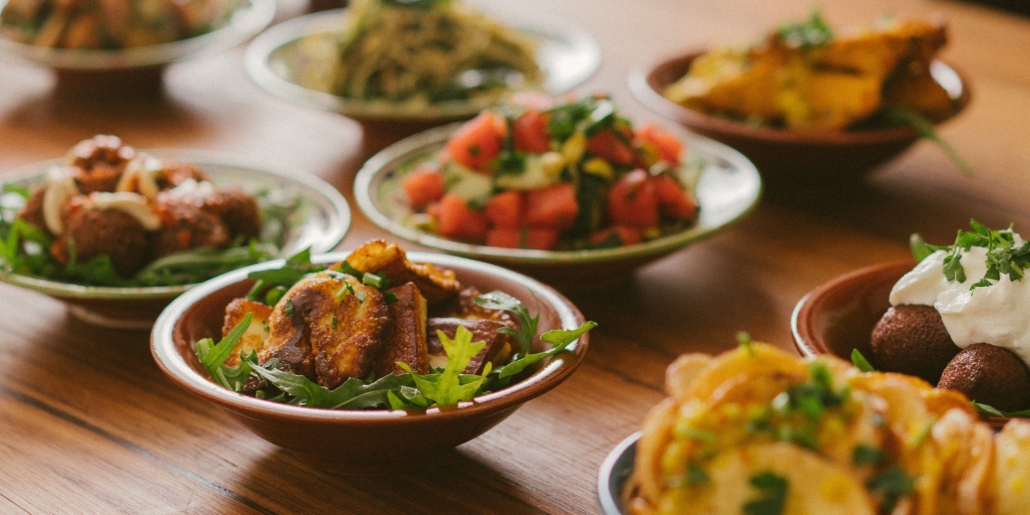
Moroccan cuisine embraces a vibrant array of vegetable dishes that elevate plant-based fare to a level of culinary artistry. One standout is the iconic Moroccan salad, a refreshing medley of tomatoes, cucumbers, and bell peppers, often dressed with olive oil, lemon juice, and a sprinkle of fresh herbs.
Other vegetable celebrations of Moroccan cuisine include
Hlalem: A hearty vegetable soup that typically includes lentils, chickpeas, carrots, and a variety of spices. It’s a wholesome and comforting dish, perfect for colder days.
Taktouka: A simple yet tasty salad made with roasted and peeled green peppers and tomatoes. It’s seasoned with garlic, olive oil, and cumin, creating a refreshing side dish.
Carrot and Orange Salad: This vibrant salad combines the sweetness of carrots and oranges with the earthiness of cumin and the freshness of mint. It’s a colorful and flavorful addition to any meal.
Stuffed Bell Peppers (Mahshi Batata): Bell peppers are filled with a mixture of spiced rice, lentils, and sometimes ground meat. The stuffed peppers are then simmered in a tomato-based sauce until tender.
These vegetable dishes showcase the diversity and creativity of Moroccan cuisine, proving that meatless options can be just as delicious and satisfying.

Looking for your own Moroccan Adventure?
Embark on a mesmerizing journey through Morocco, where ancient traditions dance with vibrant landscapes, inviting you to savor the magic of the Sahara, explore bustling souks, and lose yourself in the rich tapestry of a timeless culture.
Join one of my Morocco Food Tours Travelling in 2025. Click here for details

Minced Beef Safety: Tips for Handling and Storing Safely
0 Comments/in Blog/by Dominique RizzoIntroduction
When considering ground beef, prioritizing safety remains of utmost importance. It is crucial to adhere to appropriate protocols for handling and storing to prevent the risk of foodborne ailments. Within this piece, we shall furnish you with indispensable guidance on the secure management and storage of ground beef, guaranteeing the safety and peace of mind in your culinary endeavors. Whether you are making meat-based ground beef recipes or vegetarian alternatives, these tips will help you enjoy your dishes without any worries.
1. Safe Purchase and Transportation
Choosing Fresh Ground Beef
Master the art of choosing fresh ground beef at the supermarket by verifying packaging dates, ensuring adequate refrigeration, and steering clear of packages that display signs of damage or leakage.
Safe Transportation
Appreciate the significance of maintaining the refrigeration of ground beef during transit, particularly when dealing with warmer climates or extended travel distances.

2. Proper Storage
Refrigerator Storage
Uncover the suggested refrigeration temperature for ground beef and acquire insights into optimal meat packaging techniques to thwart cross-contamination.
Freezer Storage
Understand the proper methodology for storing ground beef in the freezer, encompassing accurate packaging methods and labeling for effortless recognition.
3. Safe Handling
Thawing Ground Beef
Gain knowledge about safer approaches to defrost ground beef, including utilizing the refrigerator, cold water baths, or the microwave, to prevent bacterial proliferation.
Preventing Cross-Contamination
Acquire an understanding of the significance of maintaining proper hygiene protocols, such as hand washing and cleaning utensils and cutting boards after coming into contact with raw ground beef, as a preventive measure against bacterial transmission.
4. Cooking Ground Beef
Safe Internal Temperatures
Understand the advised internal cooking temperatures for ground beef to guarantee its safe preparation, free from potentially harmful bacteria.
Ground Beef Storage After Cooking
Discover the correct procedures for storing cooked ground beef to preserve its safety and quality, encompassing refrigeration and freezing techniques.
Conclusion
By following these tips for safe handling and storage of ground beef, you can greatly reduce your risk of foodborne illness. Make sure to purchase fresh ground beef, keep it at the right temperature, handle it properly, and cook to the right internal temperature. These tips will keep you and your loved ones safe while enjoying delicious ground beef dishes.






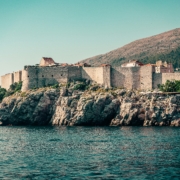 https://unsplash.com/photos/brown-concrete-building-on-rock-formation-near-body-of-water-during-daytime-r02BhUQj6cE
https://unsplash.com/photos/brown-concrete-building-on-rock-formation-near-body-of-water-during-daytime-r02BhUQj6cE

